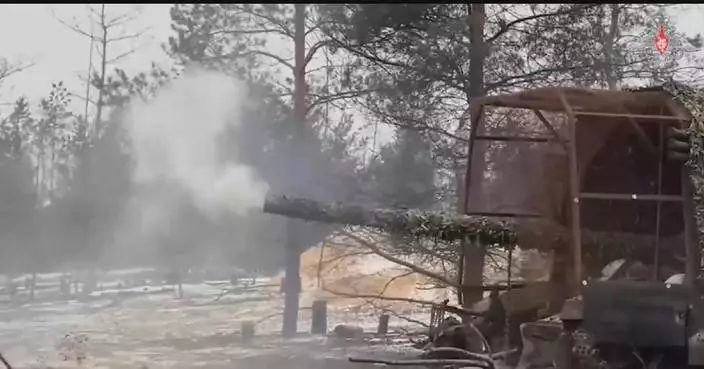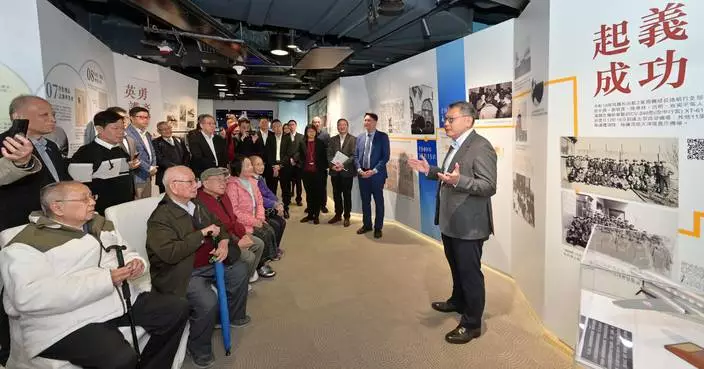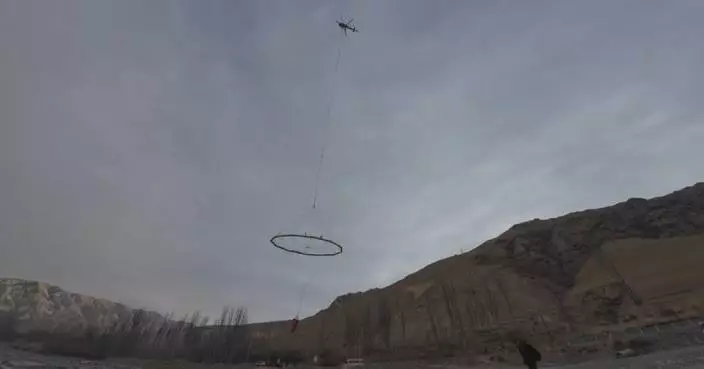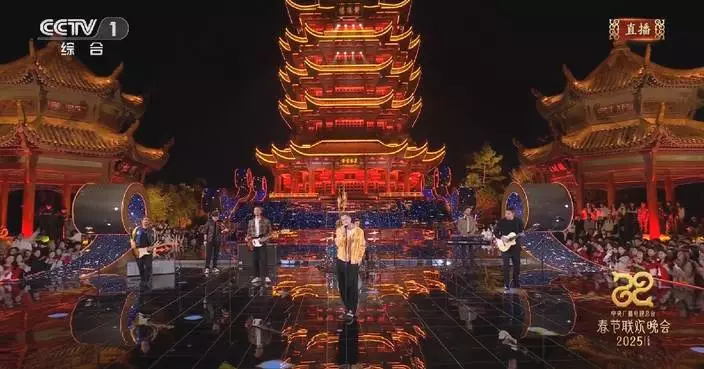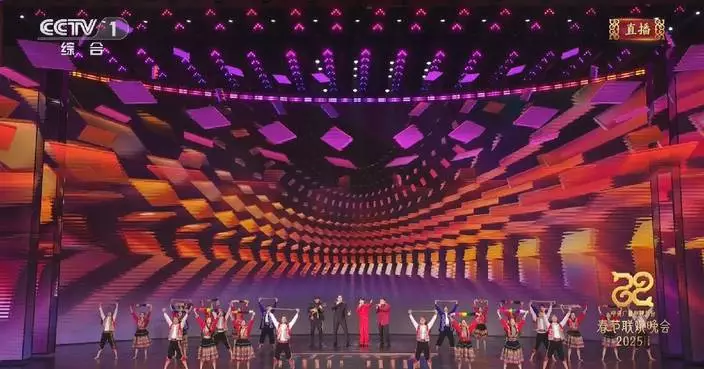Chinese cities of Guangzhou and Luoyang hosted stunning fireworks and drone light shows to celebrate the 2025 Spring Festival, offering unforgettable visual experiences to residents and visitors.
On Wednesday night, the first day of the Chinese New Year, the 50-minute fireworks and drone show over the Bai'etan area dazzled the night sky of Guangzhou, the provincial capital of Guangdong in south China. The performance began with a formation of 2,025 drones illuminating the night sky, creating vibrant shapes like Spring Festival lanterns, a dancing lion, and the iconic Canton Tower, blending modern technology with traditional Lingnan culture to send festive greetings to the audience.
Following the drone display, a grand fireworks show lit up the sky with over 150,000 fireworks spanning 650 meters, sparkling fireworks and shimmering Pearl River enhanced each other's beauty, creating a breathtaking scene of lights and colors.
Meanwhile, in Luoyang, an ancient capital city in central China's Henan Province, the 2025 Luoyang New Year Fireworks Gala took place in the Ningrenfang area of the ruins of Luoyang City in Sui and Tang dynasties.
The event started at 20:00 with a combination of drones and fireworks, organized into six chapters to showcase the grandeur of Chinese dynasties from the Xia (2070 BC-1600 BC), Shang (1600BC-1046BC), and Zhou (1046BC-256BC) to the Sui (581-619) and Tang (618-907).
"The drone show was incredibly impressive, showcasing the power of our technology. The fireworks were so spectacular, making the festive atmosphere even stronger. It's been an amazing experience, and I wish everyone a prosperous and smooth year in 2025," said Xia Wenlei, a local resident.
The Luoyang fireworks gala, enhanced by drones, lasers, and fireworks, immersed both locals, Chinese and foreign visitors in the vibrant and historic charm of the ancient city.

Dazzling fireworks, drone shows add festive atmosphere in Guangzhou, Luoyang
The top six archaeological findings across China in 2024 were announced at Wednesday's annual archaeology forum hosted by the Chinese Academy of Social Sciences.
The discoveries, covering from the Paleolithic Age to the Yuan (1271-1368), Ming (1368-1644), and Qing Dynasties (1636-1912), shed light on studies on the history and culture of ancient China.
The earliest of the six, the Dadong Site, is located in Jilin Province in northeast China. Discovered in the strata dating from 28,000 to 24,000 years ago, the site involves an artificial stone circle, which should be the remains of a primary shed of ancient humans, implying the archaeological importance of the Changbai Mountain area in the field of evolutionary anthropology studies.
The Xiatang Site in east China's Zhejiang Province, a Neolithic Age settlement site, reveals the structure and layout of the ancient village, providing new evidence for the study of the social structure of early-stage agricultural societies.
At the Siwa Site, another Neolithic Age site in northwest China's Gansu Province, the first prehistory large-scale near square-shaped moat was discovered, which might hint at the origin of the square-walled cities in China.
The Zhouyuan Site in Shaanxi Province of northwest China shows evidence of China's earliest dynasties, providing written materials for studying the history of Western Zhou Dynasty (about 1046 – 771 BC). With over 200 bone and tortoise shell pieces for divination rites being found, phrases totaling over 180 oracle scripts were recognized, covering documentations of astronomy, calendar, history, and geology.
At a Warring States period site in east China's Anhui Province, the Wuwangdun Site, researchers excavated over 10,000 pieces of cultural relics, including multiple Ding sets, or special cauldron sets, the representative ritual vessels that have long been used to represent social class and nobility, and symbols of China's traditional rites and ethnicity.
In east China's Jiangxi Province, the archaeological site of Jingdezhen City, the world-famous town of porcelain with a thousand-year history, welcomed new discoveries. The latest discoveries at the Jingdezhen Site revealed the sources of materials and fuels that supported the large-scale porcelain production, as well as the local traffic net in the Yuan, Ming, and Qing Dynasties, giving people a perception to understand Jingdezhen's development history.
"These discoveries are not only about gathering ancient relics in the fields, but, more importantly, about their value for academic research. Every single result complements our understanding of Chinese history and culture," said Shi Jinsong, the deputy head of the Institute of Archaeology at the Chinese Academy of Social Science.

China unveils top archaeological findings of 2024
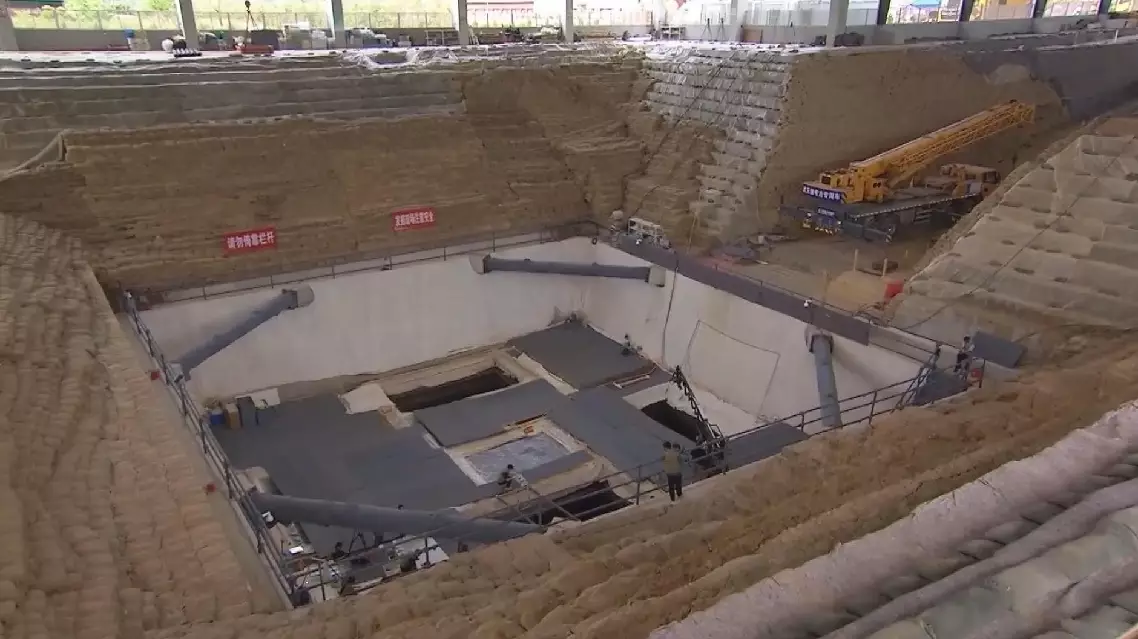
China unveils top archaeological findings of 2024






